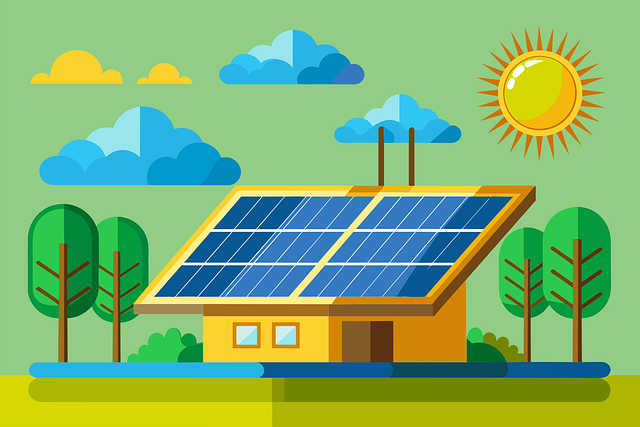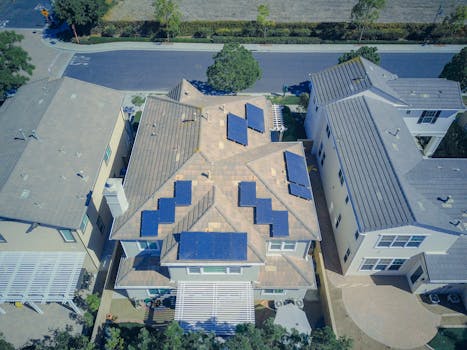“Maximize Efficiency: Unlock Peak Performance from Your Solar Inverter Installation!”
To achieve optimal performance from your solar inverter installation, it is essential to understand the key factors that influence its efficiency and longevity. Proper planning, selection of high-quality components, and adherence to best practices during installation can significantly enhance the energy output and reliability of your solar power system. This guide will outline essential steps, including site assessment, inverter selection, installation techniques, and ongoing maintenance, to ensure you maximize the benefits of your solar investment and contribute to a sustainable energy future.
Proper Sizing of Your Solar Inverter
When it comes to maximizing the efficiency and effectiveness of your solar energy system, proper sizing of your solar inverter is crucial. The inverter plays a pivotal role in converting the direct current (DC) generated by your solar panels into alternating current (AC), which is what most household appliances use. Therefore, selecting the right size inverter is essential for ensuring that your solar energy system operates at its peak performance.
To begin with, understanding your energy needs is the first step in determining the appropriate inverter size. This involves analyzing your household’s energy consumption patterns, which can typically be found on your electricity bills. By calculating your average daily energy usage in kilowatt-hours (kWh), you can establish a baseline for the amount of power your solar system needs to generate. It is important to consider not only your current energy consumption but also any potential future increases, such as the addition of new appliances or electric vehicles. This foresight will help you avoid the pitfalls of undersizing your inverter, which can lead to inefficiencies and reduced energy output.
Once you have a clear understanding of your energy requirements, the next step is to consider the capacity of your solar panel system. The inverter should be sized to match the total output of your solar panels under optimal conditions. A common rule of thumb is to select an inverter that can handle about 80% of the total DC output of your solar array. This approach allows for some flexibility, accommodating fluctuations in energy production due to factors such as shading, temperature variations, and panel degradation over time. By adhering to this guideline, you can ensure that your inverter operates efficiently without being overwhelmed by excess energy production.
Moreover, it is essential to take into account the inverter’s efficiency rating. Inverters are not 100% efficient; they typically operate at around 95% to 98% efficiency. Therefore, when sizing your inverter, it is wise to factor in this efficiency loss. For instance, if your solar panels produce 10 kW of DC power, an inverter with a 95% efficiency rating would effectively convert only about 9.5 kW of that energy into usable AC power. Understanding this relationship between inverter efficiency and solar panel output will help you make a more informed decision regarding the size of your inverter.
In addition to these considerations, the type of inverter you choose can also impact the overall performance of your solar energy system. There are several types of inverters available, including string inverters, microinverters, and power optimizers. Each type has its own advantages and disadvantages, and the best choice will depend on your specific installation conditions and energy needs. For example, microinverters can be particularly beneficial in situations where shading is a concern, as they allow each panel to operate independently, maximizing energy production.
Finally, consulting with a professional solar installer can provide invaluable insights into the proper sizing of your solar inverter. Experienced installers can assess your unique situation, taking into account factors such as roof orientation, shading, and local climate conditions. Their expertise will help ensure that your solar inverter is appropriately sized, ultimately leading to better energy production and a more efficient solar energy system. By paying careful attention to the sizing of your solar inverter, you can significantly enhance the performance and longevity of your solar energy investment.
Optimal Placement for Maximum Efficiency

When it comes to maximizing the efficiency of your solar inverter installation, optimal placement is a critical factor that can significantly influence the overall performance of your solar energy system. The location of your inverter can affect its ability to convert the direct current (DC) generated by your solar panels into alternating current (AC) for use in your home or business. Therefore, understanding the best practices for inverter placement is essential for achieving the best results.
To begin with, it is important to consider the environmental conditions surrounding the installation site. Solar inverters generate heat during operation, and excessive heat can lead to reduced efficiency and even premature failure. Consequently, placing the inverter in a shaded area or a location that allows for adequate airflow is crucial. Ideally, the inverter should be installed in a cool, dry place, such as a garage or utility room, where it is protected from direct sunlight and extreme weather conditions. This not only helps maintain optimal operating temperatures but also extends the lifespan of the inverter.
In addition to temperature considerations, the distance between the solar panels and the inverter plays a significant role in efficiency. The longer the distance, the greater the potential for energy loss due to resistance in the wiring. Therefore, it is advisable to install the inverter as close to the solar panels as possible. This minimizes voltage drop and ensures that more of the generated energy reaches the inverter for conversion. However, while proximity is important, it is equally essential to ensure that the installation complies with local electrical codes and safety regulations.
Moreover, the orientation of the inverter can also impact its performance. Inverters should be mounted vertically to facilitate proper cooling and prevent moisture accumulation. Additionally, ensuring that the inverter is installed at a height that allows for easy access for maintenance and monitoring is vital. This accessibility not only simplifies routine checks but also enables quick troubleshooting in case of any issues.
Furthermore, considering the potential for future expansions or upgrades is another aspect of optimal placement. As solar technology continues to evolve, you may want to add more panels or upgrade your inverter to a more efficient model. Therefore, planning for additional space around the inverter can save you time and money in the long run. This foresight can prevent the need for costly reinstallation or modifications down the line.
Another important factor to consider is the inverter’s proximity to the electrical panel. A shorter distance between the inverter and the main electrical panel can reduce installation costs and improve efficiency. This is because less wiring is required, which minimizes energy loss and simplifies the overall setup. Additionally, having the inverter close to the electrical panel can facilitate easier integration with your home’s electrical system.
In conclusion, achieving the best results from your solar inverter installation hinges on careful consideration of its placement. By prioritizing factors such as temperature control, distance from solar panels, orientation, accessibility, and proximity to the electrical panel, you can significantly enhance the efficiency and longevity of your solar energy system. Ultimately, investing time and effort into optimal placement will yield substantial benefits, ensuring that you harness the full potential of solar energy for years to come.
Regular Maintenance and Monitoring Practices
To achieve optimal performance from your solar inverter installation, regular maintenance and monitoring practices are essential. These practices not only ensure that your system operates efficiently but also extend its lifespan, ultimately maximizing your return on investment. One of the first steps in maintaining your solar inverter is to conduct routine inspections. This involves checking for any visible signs of wear or damage, such as frayed wires, corrosion, or loose connections. By identifying these issues early, you can prevent more significant problems that could lead to costly repairs or system downtime.
In addition to visual inspections, it is crucial to keep the inverter clean. Dust, dirt, and debris can accumulate on the inverter’s surface and within its vents, potentially leading to overheating and reduced efficiency. Regularly cleaning the inverter with a soft cloth and ensuring that the surrounding area is free from obstructions will help maintain optimal airflow and cooling. Furthermore, it is advisable to check the inverter’s display panel periodically. This panel provides valuable information about the system’s performance, including energy production levels and any error messages. By monitoring these indicators, you can quickly identify any irregularities that may require attention.
Another vital aspect of maintaining your solar inverter is to stay informed about its performance through monitoring systems. Many modern inverters come equipped with built-in monitoring capabilities that allow you to track energy production in real-time. Utilizing these features can provide insights into how well your system is functioning and help you detect any issues before they escalate. Additionally, many manufacturers offer smartphone applications or web-based platforms that enable you to monitor your system remotely. By leveraging these tools, you can ensure that your solar inverter is operating at peak efficiency and make informed decisions regarding maintenance and repairs.
Moreover, it is essential to schedule professional maintenance checks at least once a year. While regular inspections and monitoring can help you catch minor issues, a professional technician can conduct a more thorough evaluation of your system. They can assess the inverter’s performance, check for software updates, and ensure that all components are functioning correctly. This proactive approach not only helps maintain efficiency but also provides peace of mind knowing that your system is in good hands.
In addition to these practices, it is important to keep an eye on the overall health of your solar energy system. This includes monitoring the performance of the solar panels themselves, as any drop in energy production can directly impact the inverter’s efficiency. If you notice a significant decrease in energy output, it may be time to inspect the panels for dirt, shading, or damage. Addressing these issues promptly can help maintain the overall efficiency of your solar energy system.
Finally, staying informed about advancements in solar technology can also enhance your inverter’s performance. As new technologies emerge, manufacturers often release updates or new models that offer improved efficiency and features. By keeping abreast of these developments, you can make informed decisions about potential upgrades or replacements that could further optimize your solar inverter installation.
In conclusion, regular maintenance and monitoring practices are crucial for getting the best results from your solar inverter installation. By conducting routine inspections, keeping the inverter clean, utilizing monitoring systems, scheduling professional maintenance, and staying informed about your system’s overall health, you can ensure that your solar energy system operates efficiently and effectively for years to come.
Understanding Inverter Features and Settings
When considering the installation of a solar inverter, understanding its features and settings is crucial for optimizing performance and ensuring a successful solar energy system. A solar inverter serves as the heart of your solar power setup, converting the direct current (DC) generated by solar panels into alternating current (AC) that can be used in your home or fed back into the grid. Therefore, familiarizing yourself with the various features of your inverter can significantly impact the efficiency and longevity of your solar energy system.
One of the primary features to consider is the inverter’s efficiency rating. This rating indicates how well the inverter converts DC to AC power, with higher efficiency percentages translating to more usable energy from your solar panels. Most modern inverters boast efficiencies above 95%, but it is essential to choose one that suits your specific energy needs and installation conditions. Additionally, understanding the concept of maximum power point tracking (MPPT) is vital. MPPT technology allows the inverter to optimize the power output from the solar panels by adjusting the electrical load, ensuring that you capture the maximum amount of energy available, especially during varying sunlight conditions.
Another important aspect to consider is the inverter’s monitoring capabilities. Many contemporary inverters come equipped with advanced monitoring systems that provide real-time data on energy production, consumption, and system performance. This feature not only allows you to track your energy generation but also helps in identifying any potential issues early on. By regularly monitoring your system, you can ensure that it operates at peak efficiency and address any problems before they escalate, ultimately prolonging the life of your solar inverter.
Furthermore, understanding the settings of your inverter can enhance its performance. For instance, many inverters allow users to adjust settings related to grid connection, battery storage, and energy consumption preferences. If your system includes battery storage, configuring the inverter to prioritize charging during peak solar production hours can maximize your energy savings. Additionally, some inverters offer smart features that enable them to communicate with other devices in your home, allowing for automated energy management. This integration can lead to more efficient energy use and further reduce your reliance on grid power.
Moreover, it is essential to consider the inverter’s warranty and support options. A robust warranty can provide peace of mind, ensuring that you are covered in case of any defects or performance issues. Additionally, having access to reliable customer support can be invaluable, especially if you encounter technical difficulties or require assistance with system settings. Researching the manufacturer’s reputation and customer reviews can help you make an informed decision regarding the inverter you choose.
In conclusion, understanding the features and settings of your solar inverter is fundamental to achieving the best results from your solar installation. By focusing on efficiency ratings, monitoring capabilities, and customizable settings, you can optimize your energy production and consumption. Additionally, considering warranty and support options will further enhance your experience and investment in solar energy. Ultimately, a well-informed approach to your solar inverter will not only maximize your energy savings but also contribute to a more sustainable future.
Q&A
1. **Question:** What factors should be considered when choosing a solar inverter?
**Answer:** Consider the inverter’s efficiency rating, compatibility with your solar panels, warranty length, and features like monitoring capabilities and grid-tie options.
2. **Question:** How can I optimize the placement of my solar inverter?
**Answer:** Install the inverter in a shaded, cool, and well-ventilated area to prevent overheating and ensure optimal performance.
3. **Question:** What maintenance is required for solar inverters?
**Answer:** Regularly check for dust accumulation, ensure proper ventilation, and monitor performance through the inverter’s monitoring system to identify any issues early.
4. **Question:** How can I maximize the energy output from my solar inverter?
**Answer:** Ensure your solar panels are clean and free from obstructions, regularly monitor system performance, and consider installing additional panels if your energy needs increase.
Conclusion
To achieve the best results from your solar inverter installation, ensure proper sizing and selection of the inverter based on your system’s capacity and energy needs. Engage a qualified installer for optimal placement and installation, considering factors like shading and ventilation. Regular maintenance and monitoring of the system’s performance will help identify issues early and maximize efficiency. Additionally, staying informed about advancements in technology and potential upgrades can enhance the overall performance of your solar energy system.




